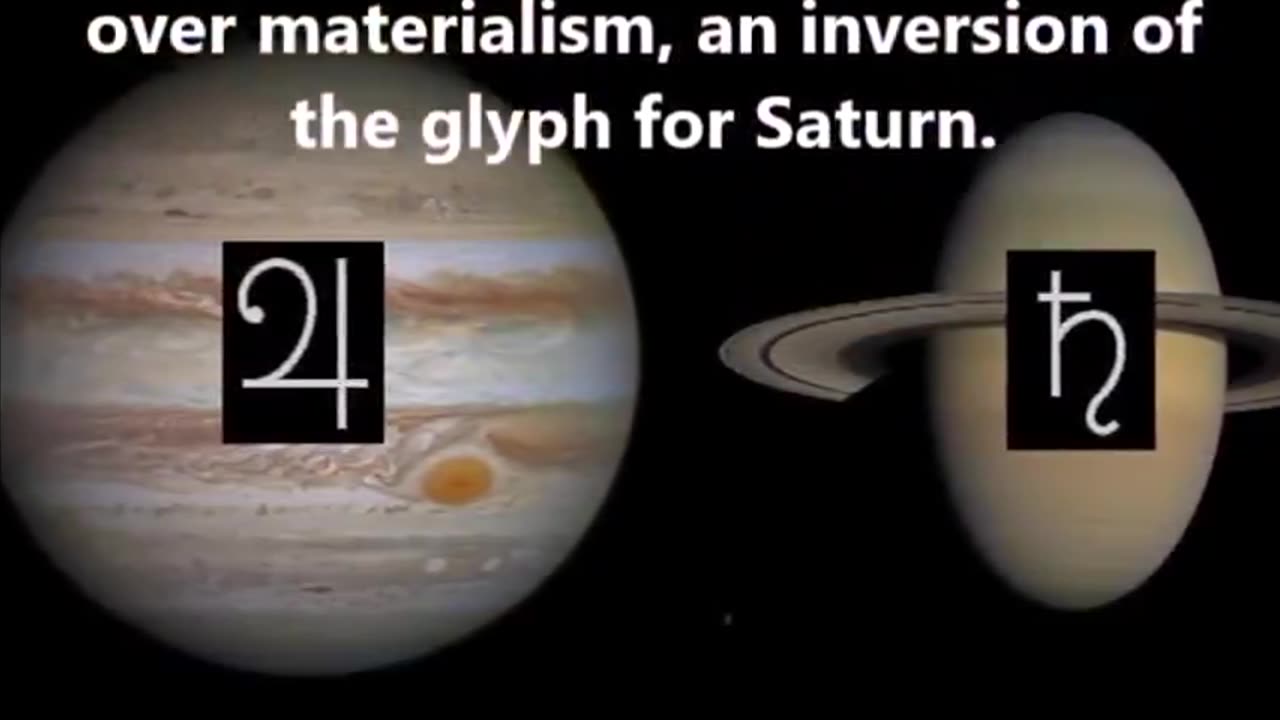Premium Only Content

Saturn & Judaism - Metaphysics of the Gods by B R Taylor
B.R. Taylor’s work (Metaphysics of the Gods) explores the astrological, mythological, and esoteric connections between the planet Saturn and Judeo-religious traditions. The book argues that:
Saturn (Kronos in Greek, El in Canaanite myth) was originally an Aryan cosmic archetype later appropriated and distorted by Semitic cultures.
Judaism’s "God of Israel" (Yahweh/Jehovah) assimilated Saturnian attributes, including:
Time, judgment, and restriction (Saturn as "Lord of Karma").
The "Sabbath" (Saturday = Saturn’s day) as a ritual of control.
The "Black Cube" of Saturn (symbolizing materialism and limitation) became a key Judaic symbol (e.g., Kaaba in Islam, Tefillin in Judaism).
Taylor’s research suggests:
Vedic & Indo-European Saturn
In Hinduism, Shani (Saturn) is a stern but just deity linked to karma and discipline.
Iranian Zurvanism (pre-Zoroastrian) worshipped Zurvan (Time), a Saturn-like primordial god.
Germanic traditions associated Saturn with Tiwaz (Tyr), a god of law and sacrifice.
Semitic Appropriation
Canaanite El (later Yahweh) absorbed Saturnian traits from Aryan-influenced Mesopotamian cults.
Babylonian Ninurta (Saturn god) was merged into Jewish angelology (e.g., Archangel Cassiel).
The Golden Calf (Exodus 32) may represent a Saturnian bull cult suppressed by Moses.
Saturn in Judaism as a Tool of Control
Talmudic Saturn (Shabbatai) is tied to fate, suffering, and legalism.
The "Demiurge" in Gnosticism (Yaldabaoth) is a corrupt Saturnian demi-god.
Modern Jewish Freemasonry & Kabbalah use Saturnian cube symbolism for elite manipulation.
3. Evidence Cited for Aryan Origins
Archaeology: Swastikas (solar symbols) found in Indo-European sites predate Jewish use of Saturn imagery.
Linguistics: The root "KR" (Kronos, Kaaba, Karma) appears in Sanskrit, Greek, and Germanic lore.
Mythology: Compare Vedic Shani’s fairness vs. Yahweh’s wrath—Taylor argues the latter is a corruption.
Deep Comparative Mythology – Connects Vedic, Greco-Roman, and Semitic traditions.
Anti-Kabbalist Perspective – Exposes how Saturnian magic is used in Talmudic ritual.
Challenges Mainstream Narratives – Rejects the idea that Judaism developed in isolation.
-
 LIVE
LIVE
SpartakusLIVE
1 hour agoVerdansk QUADS || #1 MACHINE is BACK taking NO DAYS OFF (until I feel like it)
100 watching -
 15:27
15:27
robbijan
3 hours agoThe Emperor’s New Labubu & The Spiritual War Behind Everything
5011 -
 LIVE
LIVE
Barry Cunningham
2 hours agoBREAKING NEWS: PRESIDENT TRUMP ON PATROL IN WASHINGTON D.C.
2,377 watching -
 16:40
16:40
T-SPLY
1 day agoLiberal Lawmaker Gets Busted Lying - D.H.S Brings Receipts!
1.17K7 -
 LIVE
LIVE
SavageJayGatsby
50 minutes agoMario Party with Friends | Goal to 100 Followers | 300 Weekly Goal for Spicy Bites!
7 watching -
 LIVE
LIVE
Mally_Mouse
3 hours agoLet's Play!! - Mario Party Jamboree w/FRIENDS
42 watching -
 DVR
DVR
Stephen Gardner
49 minutes ago🔥Dems NEW PLOT Against Trump EXPOSED!
3651 -
 UPCOMING
UPCOMING
The Mel K Show
3 hours agoMel K & Patrick Byrne | Deep Rig Exposed: Tracking Election Fraud's Global Tentacles | 8-21-25
3.2K1 -
 1:07:38
1:07:38
BonginoReport
3 hours agoThe Po-Po President Picks Up The Night Shift! - Nightly Scroll w/ Hayley Caronia (Ep.117)
69.2K37 -
 LIVE
LIVE
GloryJean
48 minutes agoSniping MANIAC on Mnk 🖱️ 6.7 K/D | Squads w/ the BOYS
48 watching